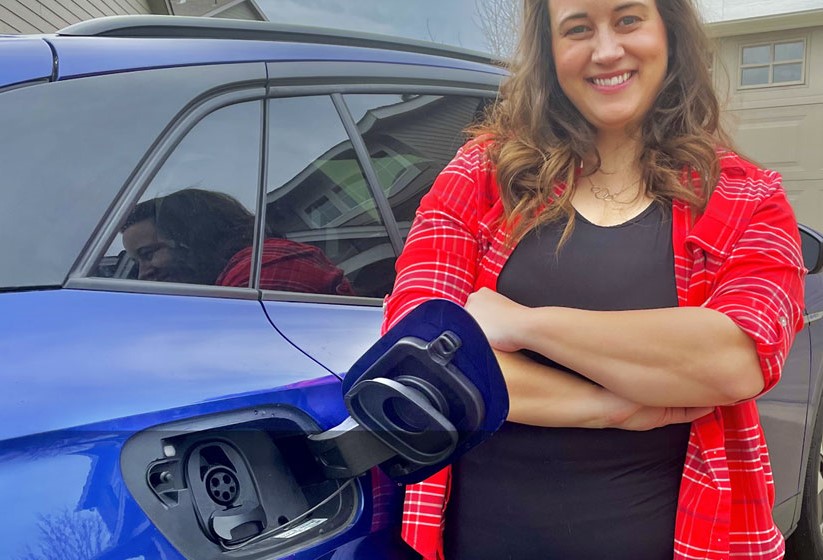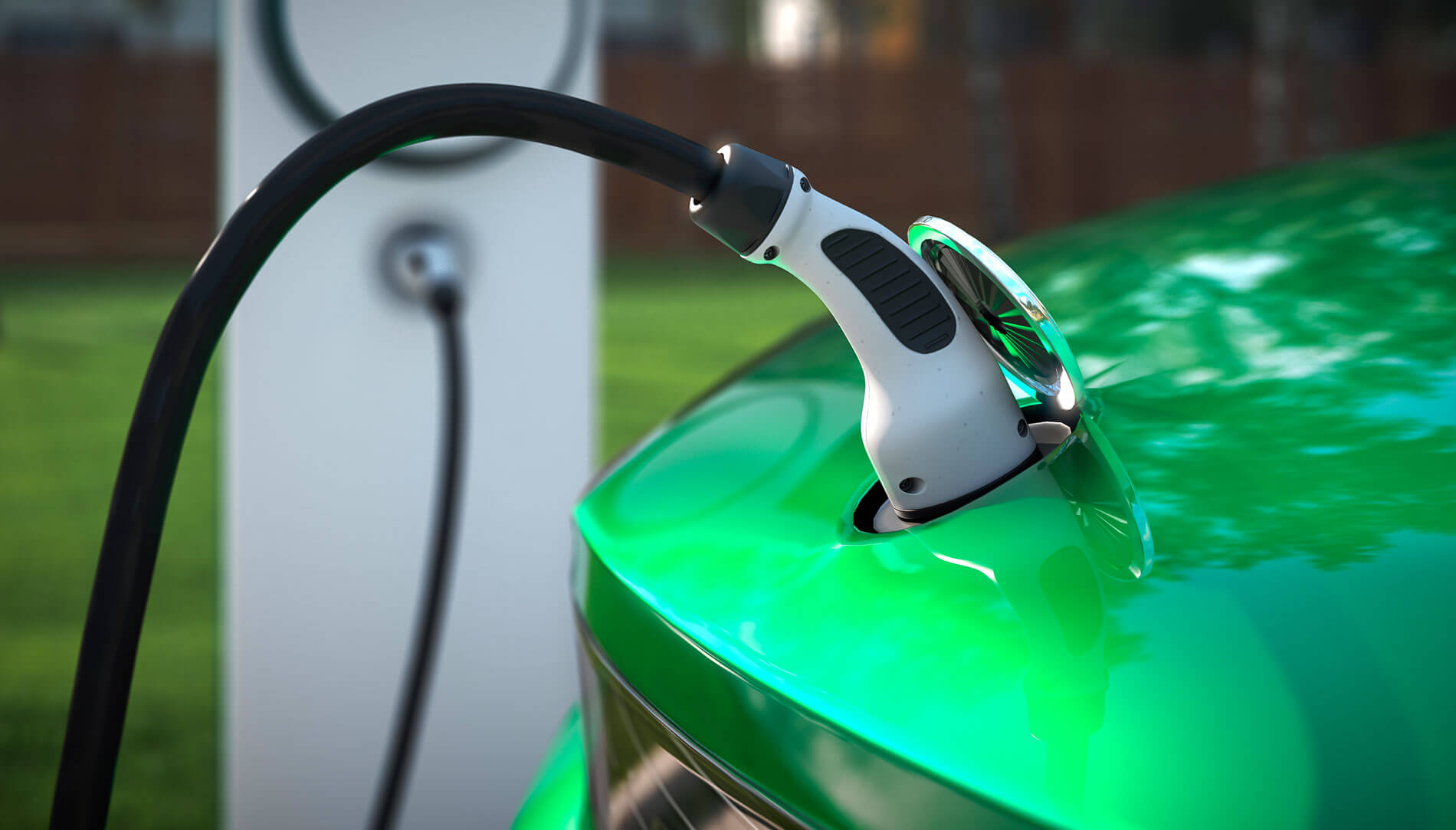The AAA Washington team shares advice for driving an EV between Spokane, Wenatchee and Yakima
In February 2023, two AAA Washington team members embarked on a road trip across Eastern Washington in an electric vehicle (EV). VP of Corporate Affairs and Environmental, Social and Governance Laura Ray and Community Relations Program Manager Erin Rogers drove to three AAA stores in Spokane, Wenatchee and Yakima. They journeyed through high desert terrain, the mountain summit of Manastash Ridge, and freezing temperatures of Eastern Washington in Rogers’ 2021 VW ID.4 EV, which has 240 to 260 miles of range per maximum charge.
In this article, Ray shares a first-hand account of lessons learned, roads less traveled and the joys of driving an EV — or electric car — across Eastern Washington.

Driving an EV across Eastern Washington by Laura Ray
As the sustainability lead for an auto club, part of my work includes finding ways to support our members who are considering other modes of transportation, including an EV. As a recent EV owner, I recognize the delights of EV ownership (like performance and fuel savings) as well as the challenges (like reliable charging stations) that come along with making the switch. But, long-distance EV road trips were new to me.
To learn more about the long-distance capabilities of EVs and see a beautiful part of our state, I teamed up with another new EV owner, my colleague Erin Rogers. Together, we drove her new EV to three Eastern Washington AAA stores. The one-way distance we planned to travel — from Spokane to Wenatchee to Yakima — is about 285 miles.
We learned a lot along our several hundred-mile journey, especially that a long road trip in an EV is a vastly different experience than commuting within the city! Since many of our members are also considering EVs, here’s what we learned and wish we would have known before we set out on our electric car road trip.

1. Before you go, get to know your car
It’s good to understand some basics before you head out, for example, how charging works as well as the potential impacts of battery range (more on this later).
You’ll also want to know your car’s battery range in “normal” conditions.
Many EVs have different driving modes, which can impact battery life. Typically, these modes include eco, sport and traction, and vary by vehicle and manufacturer. For example, eco mode increases the amount of regenerative braking and puts more charge back into the battery when braking.
Be sure to set your car to the best mode for maximizing battery life during a road trip.
2. For road trips, charge your car to 100%
For most EVs, manufacturers recommend regularly charging up to 80% of your battery to maintain its health (read more about that here from AAA’s partner, Recurrent). However, for road trips, it’s OK to charge up to 100% to maximize your battery before you go.
Note: Erin and I both have to manually change this setting in our cars as the typical default charge limit is 80% or 90%.

3. Install all applicable charging apps
I found that one of the most confusing things about charging is that there are so many different kinds of stations. In fact, one of my mapping tools shows nearly two dozen different networks! However, I have found some consistent players when it comes to EV chargers, and at least a couple in Washington, including EVgo and ChargePoint. If you’re a Tesla driver, install the Tesla network app.
Each different charging station network has its own app that you’ll need to download to be able to charge. Once downloaded, you can set up an account, so when you get to the station you are ready to plug and charge. (Trust me, it’s no fun having to do this when you get to the station.)
Note: While Tesla has plans to make its network of charging stations universal to all EV drivers, currently they are only available to Tesla drivers. Conversely, Teslas do have adapters so drivers can use other charging ports beyond the Tesla network. You’ll want to double check this before you head out.

4. Install mapping apps (and test drive them locally first)
Truth be told, I didn’t have much experience with these mapping tools before I set out. While Erin was driving, I played around with PlugShare, Alt Fuels and Google Maps. They are all different and take some time to understand. (I wish I would have taken the time to practice small trips locally. Just like any mobile app, it takes a bit of playing around to find your confidence.)
It’s good to get a handle on all the various mapping tools available and to find the one you like best. These apps are vital to getting you where you need to go, and you need to trust that the info it’s telling you is reliable. Within the app, you put in your starting point and your intended destination, what kind of car you have, and it will plot out a route with recommended points to stop and charge depending on your car’s total mileage per charge.

From the apps I used, for overall trip planning and mapping, I relied most on PlugShare. What I like about it is that it shows a picture of the charging station site itself, which is important to me from a safety perspective.
I’ve been to some charging sites that I wouldn’t feel comfortable at alone as a woman or as a mom with small children as they are remote or in dark areas. I also like that the app shows what amenities are close—this is important so you can use the restroom and grab a bite to eat.
My favorite feature is the self “check in” where drivers can share real time info about their experience at the station: how many cars were in the queue, wait time, if the charger was broken, was it fast, amenities, etc. You can then bookmark stations you like within the app for future trips.
For Google Maps, I would add the phrase “EV charging stations” in the search bar with options for “top rated,” “plug type” and “fast charge.” The Alt Fuels app provides a snapshot of chargers in the area and I would cross check with what I was finding on PlugShare.
This all sounds like a lot, but I liken it to getting a new smartphone. It’s often a hassle to get a new one, set it up, deal with the bugs and software updates along the way, but once you start using it things get easier and you realize how much it’s making your life easier.
5. Locate the right type of charging station

Our trip was over multiple days across such a wide span of area and, for the most part, we were able to consistently find level 2 charging stations along our route, and most were near amenities like restaurants and gas stations.
A bit trickier to find are DC fast charging stations. The Tesla network does this better than anyone, and it will be incredibly helpful when they open up their network to other EV drivers. I suspect finding high speed charging stations will become easier in the coming years as states roll out charging stations as part of the National EV Infrastructure Act (NEVI). The NEVI Program provides $5 billion in funding to help build a coast-to-coast network of 500,000 fast chargers.
For your first road trip, it’s also a good idea to plan extra charging time into your schedule. As you get to know your car’s battery, you’ll gain a better sense of the optimal points on every journey when you can charge.
6. Get to know your car’s battery

In addition to learning more about the world of charging stations, we also learned some lessons about the car’s battery. We noticed that climbing mountain passes did impact the battery, as did highway speeds, which drain the battery faster than lower speeds in the city. Also, despite plugging into our hotel’s level 1 charging station overnight, the car did not fully charge. We think the freezing temperature had a part to play, in addition to the fact that the charging station was only a level 1.
Overall, while we experienced some hiccups along the way, we never felt that we were in danger of running out of charge. I was surprised with the accessibility of charging stations across Eastern Washington, especially in some of the smaller towns. My military father would always say, “the most important lessons in life are learned the hard way,” and I think this experience opened my eyes to the reality of the limitations of EVs today, with hopes that it will only get better in time.
—Written by Laura Ray
—Top photo: AdobeStock




